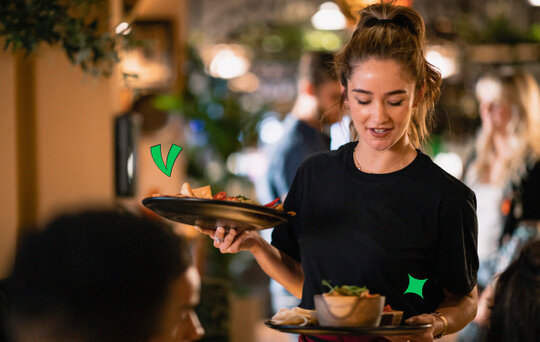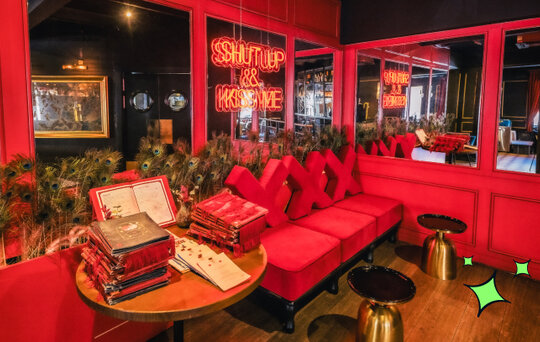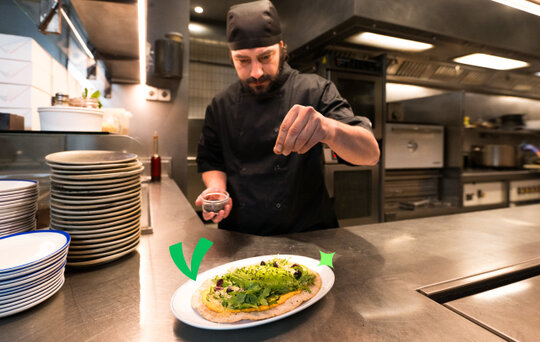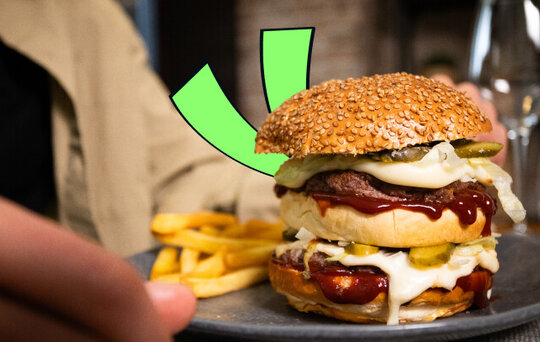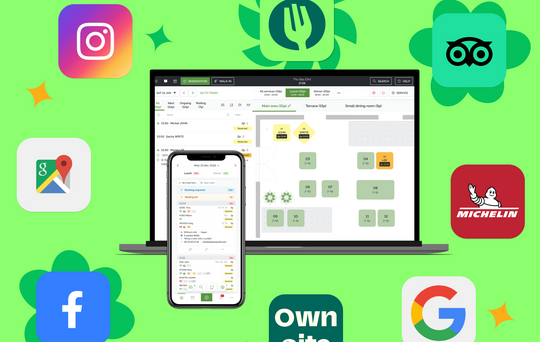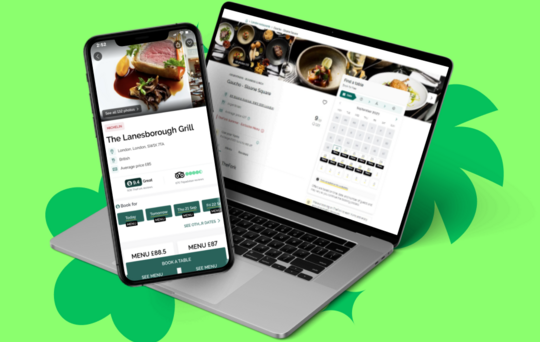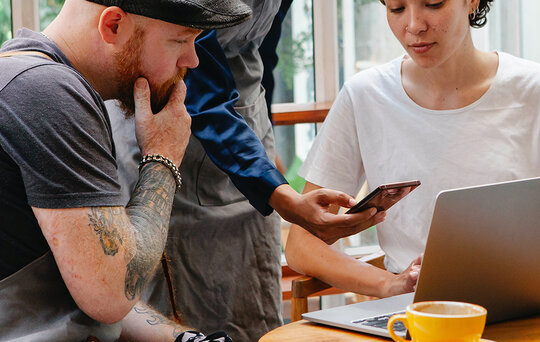How to calculate food cost in your restaurant
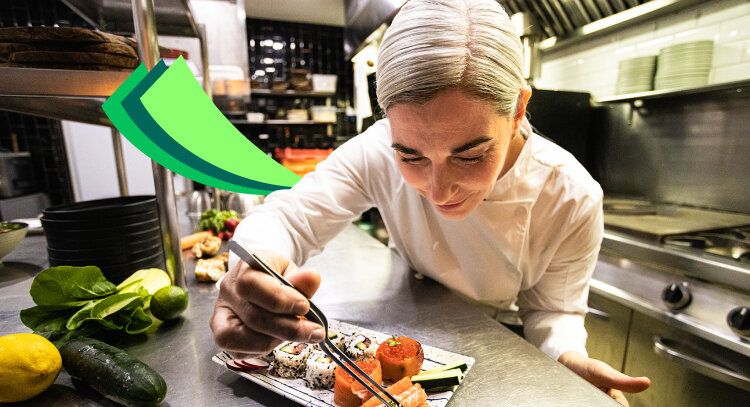
- • Restaurant food cost control
- • Restaurant food cost: a definition and how to control it
- • How to calculate food cost percentage: Step-by-step guide
- • Try TheFork Manager today
- • Strategies for controlling food cost
- • Common mistakes in food cost management
- • Empty tables and ever-increasing costs?
Restaurant food cost control
A restaurant’s food cost is an essential metric to determine and monitor profitability, especially in a highly competitive market such as the United Kingdom. Here, profit margins are low — averaging around 3-5% — and ingredient prices are volatile.
The British restaurant scene compels restaurateurs to adopt a particularly detail-oriented management approach, making food cost a key component in pricing strategies. Are you ready to create the perfect menu and set ideal prices to optimise costs and revenues? First, let's tackle the question “what is food cost in a restaurant” before diving into the most effective methods for calculating it.
Restaurant food cost: a definition and how to control it
Firstly, let’s take a closer look at the definition of food cost. This figure represents the ratio of the total amount spent on preparing a dish to its selling price. It is typically expressed as a percentage and it is always inversely proportional to profitability. This metric highlights the delicate yet complex balance that every successful restaurateur must navigate. If the food cost of your dishes exceeds the benchmark (typically around 30%), your menu may struggle to be profitable. On the other hand, if your food cost is too low, it could indicate a compromise on the quality of your offerings.
How to calculate food cost percentage: Step-by-step guide
But how do you calculate food cost? Let's examine the food cost percentage formula:
% Food Cost = (Cost of Goods Sold / Total Food Sales) x 100
There are two fundamental elements you need to consider: the Cost of Goods Sold (CoGS), which is the cost of the raw materials used to prepare the sold courses, and the total food sales, which refers to the revenue generated from those dishes. By dividing the first factor by the second and multiplying the result by one hundred, you’ll arrive at your food cost percentage. This percentage is essential for assessing the profitability of your restaurant.
Cost of food sold formula (CoGS)
How much did the raw materials for your menu actually cost? A proper evaluation of the real value of goods sold requires consistent tracking of your food inventory. This means recording the products in stock at the beginning and end of the "accounting period", a specific time frame used as a benchmark (while also factoring in waste).
To calculate the price of initial and final inventories, you can choose between two methods: physical or perpetual inventory. The physical approach involves manually counting all items in stock on a weekly, monthly, or quarterly basis. On the other hand, perpetual inventory uses management software to continuously update stock levels in real-time, every time a product is received or used.
Average restaurant food cost per month
Let’s look at a practical example. At the beginning of your selected accounting period, start by recording all your supplies. By summing up each product, you’ll arrive at the initial stock value. Then, at the end of the month, repeat the process with the remaining items to get the final stock value.
Keep in mind that not all stock may be sold. Therefore, it’s important to account for waste. Make sure to record any food that gets thrown away due to expiration, damage, or any other reason. By doing this, you can compile a dedicated list of waste. This way, at the end of the month you’ll be able to identify any inventory discrepancies. These discrepancies can put a restaurant's profitability at risk, as they often result from errors, unrecorded products, or even theft.
In other words, effective inventory management aimed at improving your restaurant’s profitability involves keeping a close eye on everything that separates your initial stock from your final stock, minus your sales.
How to calculate food cost per serving
Let's apply the formula to calculate food cost for a single course on your menu, to verify its profitability. This assessment is extremely useful if you want to monitor the economic sustainability of your menu and adjust offerings accordingly.
% Food Cost = (Cost of Making the Dish / Selling Price) x 100
To estimate the food cost of a plate, simply sum up the value of all the ingredients used to make it, divide this total by the revenue generated from its sale, and then multiply the result by 100.
Is the percentage higher than 30%? If so, that dish might not be very profitable for you. However, if the food cost is below 30%, that course is likely to ensure good profit margins for your restaurant—so be sure to highlight it on your menu and encourage your staff to recommend it more often!
The goal here is to optimise your menu by analysing the food cost of each dish. This way, you can promote the more profitable ones and reduce costs where necessary.
Try TheFork Manager today
Strategies for controlling food cost
How can you reduce food cost without compromising the quality of your offerings? Drastically cutting portions could jeopardise the trust of your most loyal customers, just as replacing premium ingredients with cheaper alternatives might.
Instead, consider negotiating with suppliers to reduce food prices in exchange for consistent purchases or larger order volumes. Always opt for seasonal produce—these monthly vegetables typically cost less and enhance both the taste and presentation of your dishes.
Additionally, implementing inventory management systems can help reduce waste. Always keep a close eye on expiration dates and make the most of every ingredient, using all parts when possible.
Resources and tools for calculating food cost
Now that we understand the key role food cost plays in a restaurant's profitability, it’s essential to avoid basic errors, such as miscalculations and poor strategic decisions based on misleading data.
Reduce human error and save time through automation. Food cost calculators specifically designed for the restaurant industry can help you monitor purchase prices and inventory, consistently providing accurate figures.
The most highly rated food cost restaurant management software in the UK are MarketMan and SimpleOrder. Both are comprehensive, reliable, and include stock management features. These are paid tools with a free trial option.
There are also no-charge alternatives: RestaurantOwner.com and Toast are popular cost calculators that offer essential functions for restaurateurs, if you are unwilling (or unable) to invest in such tools.
If you prefer working with Excel, you can easily download food cost calculation templates, which can be converted into PDFs. Free resources at your disposal include Restaurant Engine. On top of that, there are highly specific templates like Food Truck Empire, designed for managing and scaling mobile kitchens.
Reduce food cost and optimise profits
A restaurant's success relies heavily on food cost, but that’s just one piece of the puzzle. It’s also fundamental to stand out and be recognised for the uniqueness of your offering.
With a strong identity and enticing menus, you can highlight the courses your regular customers love while attracting new guests who have been looking for a restaurant like yours. This is where promotions come into play. TheFork Manager makes it easy to leverage all the benefits of promotional strategies. With its many features, you can analyse the performance of each plate and activate or deactivate personalised offers.
Consider setting promotions at specific times to fill your restaurant during quieter hours, helping to cover your fixed costs. Even during peak times, TheFork Manager can assist you with its digital seating plan, ensuring effective table rotation to serve as many people as possible while optimising profits and minimising customer wait times.
Remember to maintain an overall average restaurant food cost percentage between 25% and 35%. Aim to build a balanced menu that includes appealing “signature” dishes alongside those that drive revenue. To keep your venue bustling, leverage special offers and attract new customers during off-peak hours. Every working hour counts for restaurant managers! TheFork knows this all too well and offers an easy-to-use tool packed with features tailored for you.
Common mistakes in food cost management
Managing food cost is crucial to your restaurant's success, but there are some common pitfalls to watch out for! One of the most common mistakes is failing to accurately record inventory, which can lead to discrepancies and unexpected expenses. To avoid this, implement a reliable inventory tracking system that keeps everything up to date automatically.
Another common issue is using incorrect calculations, which can skew your food cost percentages and affect your pricing strategies. Try using dedicated food cost calculators or software designed specifically for the restaurant industry to ensure your numbers are always spot-on.
Lastly, forgetting to account for waste can have a significant impact on your bottom line. Make it a habit to track and minimise waste by keeping an eye on expiration dates and using seasonal ingredients when possible. Being mindful of these common errors will help in ensuring your food cost management is optimised and your restaurant is maximising revenue.
Want to simplify the process of restaurant food cost management even further? Check out TheFork Manager, a tool designed to help restaurateurs like you streamline operations and boost profitability!




